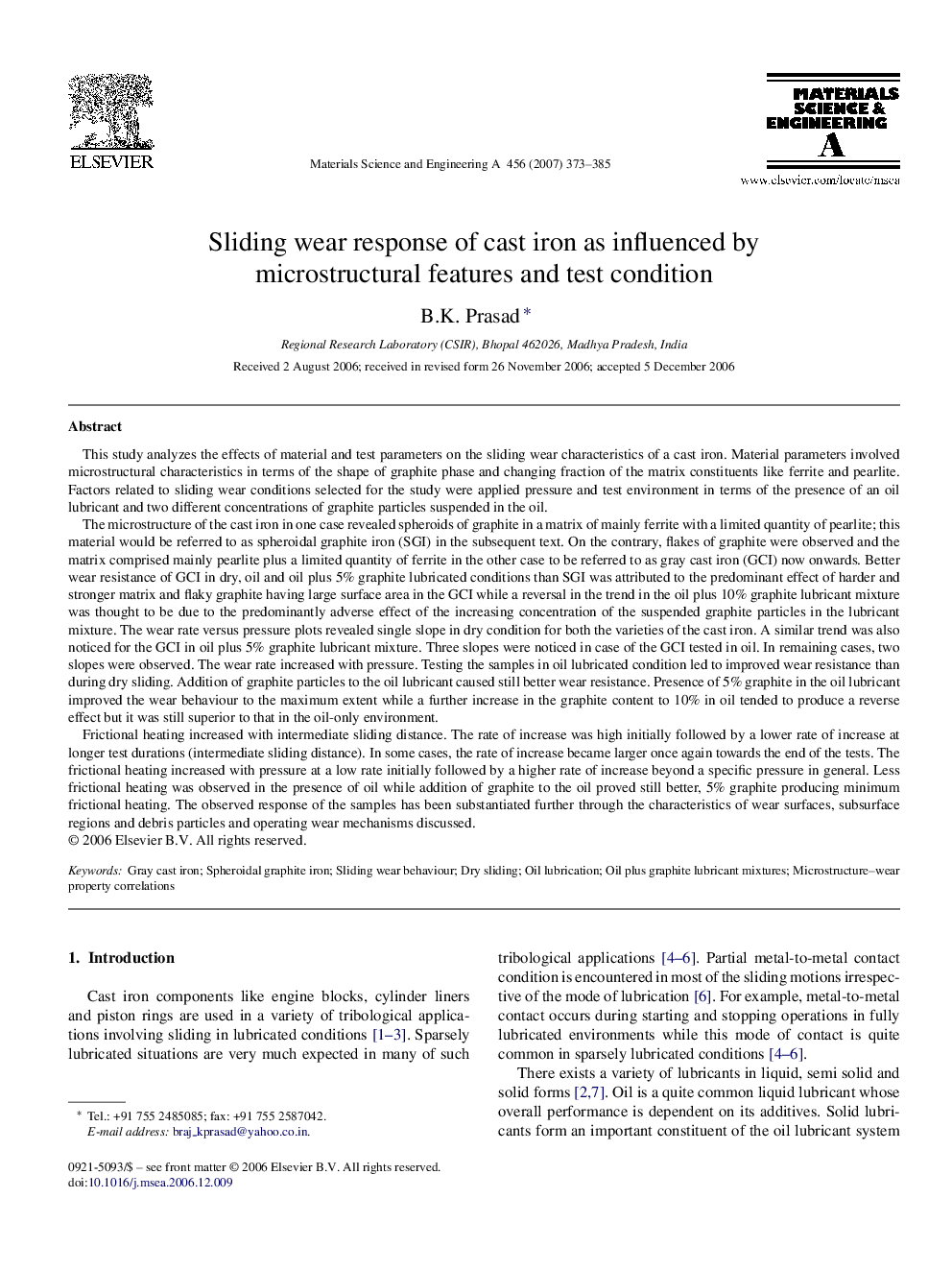| کد مقاله | کد نشریه | سال انتشار | مقاله انگلیسی | نسخه تمام متن |
|---|---|---|---|---|
| 1583827 | 1514897 | 2007 | 13 صفحه PDF | دانلود رایگان |

This study analyzes the effects of material and test parameters on the sliding wear characteristics of a cast iron. Material parameters involved microstructural characteristics in terms of the shape of graphite phase and changing fraction of the matrix constituents like ferrite and pearlite. Factors related to sliding wear conditions selected for the study were applied pressure and test environment in terms of the presence of an oil lubricant and two different concentrations of graphite particles suspended in the oil.The microstructure of the cast iron in one case revealed spheroids of graphite in a matrix of mainly ferrite with a limited quantity of pearlite; this material would be referred to as spheroidal graphite iron (SGI) in the subsequent text. On the contrary, flakes of graphite were observed and the matrix comprised mainly pearlite plus a limited quantity of ferrite in the other case to be referred to as gray cast iron (GCI) now onwards. Better wear resistance of GCI in dry, oil and oil plus 5% graphite lubricated conditions than SGI was attributed to the predominant effect of harder and stronger matrix and flaky graphite having large surface area in the GCI while a reversal in the trend in the oil plus 10% graphite lubricant mixture was thought to be due to the predominantly adverse effect of the increasing concentration of the suspended graphite particles in the lubricant mixture. The wear rate versus pressure plots revealed single slope in dry condition for both the varieties of the cast iron. A similar trend was also noticed for the GCI in oil plus 5% graphite lubricant mixture. Three slopes were noticed in case of the GCI tested in oil. In remaining cases, two slopes were observed. The wear rate increased with pressure. Testing the samples in oil lubricated condition led to improved wear resistance than during dry sliding. Addition of graphite particles to the oil lubricant caused still better wear resistance. Presence of 5% graphite in the oil lubricant improved the wear behaviour to the maximum extent while a further increase in the graphite content to 10% in oil tended to produce a reverse effect but it was still superior to that in the oil-only environment.Frictional heating increased with intermediate sliding distance. The rate of increase was high initially followed by a lower rate of increase at longer test durations (intermediate sliding distance). In some cases, the rate of increase became larger once again towards the end of the tests. The frictional heating increased with pressure at a low rate initially followed by a higher rate of increase beyond a specific pressure in general. Less frictional heating was observed in the presence of oil while addition of graphite to the oil proved still better, 5% graphite producing minimum frictional heating. The observed response of the samples has been substantiated further through the characteristics of wear surfaces, subsurface regions and debris particles and operating wear mechanisms discussed.
Journal: Materials Science and Engineering: A - Volume 456, Issues 1–2, 15 May 2007, Pages 373–385